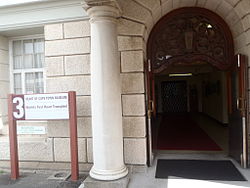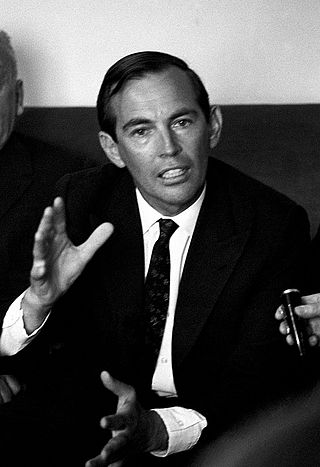
Christiaan Neethling Barnard was a South African cardiac surgeon who performed the world's first human-to-human heart transplant operation. On 3 December 1967, Barnard transplanted the heart of accident victim Denise Darvall into the chest of 54-year-old Louis Washkansky, with Washkansky regaining full consciousness and being able to talk easily with his wife, before dying eighteen days later of pneumonia, largely brought on by the anti-rejection drugs that suppressed his immune system. Barnard had told Mr. and Mrs. Washkansky that the operation had an 80% chance of success, an assessment which has been criticised as misleading. Barnard's second transplant patient, Philip Blaiberg, whose operation was performed at the beginning of 1968, returned home from the hospital and lived for a year and a half.

Groote Schuur Hospital is a large, government-funded, teaching hospital situated on the slopes of Devil's Peak in the city of Cape Town, South Africa. It was founded in 1938 and is famous for being the institution where the first human-to-human heart transplant took place, conducted by University of Cape Town-educated surgeon Christiaan Barnard on the patient Louis Washkansky.
Louis Joshua Washkansky was a South African man who was the recipient of the world's first human-to-human heart transplant, and the first patient to regain consciousness following the operation. Washkansky lived for 18 days and was able to speak with his wife and reporters.
Denise Darvall was the donor in the world's first successful human heart transplant, performed at Groote Schuur Hospital, South Africa, by a team of surgeons led by Christiaan Barnard.
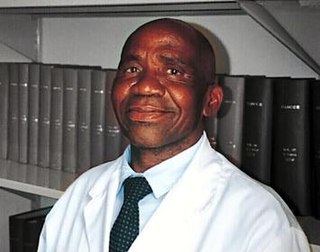
Hamilton Naki was a laboratory assistant to cardiac surgeon Christiaan Barnard in South Africa. He was recognised for his surgical skills and for his ability to teach medical students and physicians such skills despite not having received a formal medical education, and took a leading role in organ transplant research on animals.

Observatory is a suburb in Cape Town, South Africa, colloquially known as Obs. Bordered by Mowbray to the south and Salt River to the northwest, the area is best known as a student neighbourhood associated with the nearby University of Cape Town and Groote Schuur Hospital. It takes its name from the South African Astronomical Observatory headquarters, built in 1829 by the Royal Observatory.
Philip Blaiberg was a South African dentist and the third person to receive a heart transplant. On 2 January 1968, in Cape Town, Dr. Christiaan Barnard performed the third heart transplant in the world on the 59 year old Blaiberg. Blaiberg survived the operation, and continued with his life for 19 months and 15 days before dying from heart complications on 17 August 1969. The success of Blaiberg's heart transplant furthered the progress made in regard to heart transplantation.
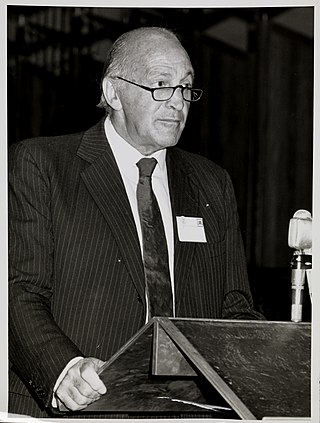
Sir Raymond Hoffenberg KBE was an endocrinologist who specialised in the study of the thyroid. Born in South Africa, he was forced to leave in 1968, and settled in the United Kingdom, where he was President of the Royal College of Physicians from 1983 to 1989, and President of Wolfson College, Oxford, from 1985 to 1993.

Marius Stephanus Barnard was a South African cardiac surgeon and inventor of critical illness insurance.
Adrian Kantrowitz was an American cardiac surgeon whose team performed the world's second heart transplant attempt at Maimonides Medical Center in Brooklyn, New York on December 6, 1967. The infant lived for only six hours. At a press conference afterwards, Kantrowitz emphasized that he considered the operation to have been a failure.
Johan Naude is a South African surgeon and urologist. Naude was former president of the South African Urological Association and a pioneering transplant surgeon who worked closely with legendary heart transplant surgeon Christian Barnard.

A heart transplant, or a cardiac transplant, is a surgical transplant procedure performed on patients with end-stage heart failure or severe coronary artery disease when other medical or surgical treatments have failed. As of 2018, the most common procedure is to take a functioning heart, with or without both lungs, from a recently deceased organ donor and implant it into the patient. The patient's own heart is either removed and replaced with the donor heart or, much less commonly, the recipient's diseased heart is left in place to support the donor heart.

Mervyn S. Gotsman is Professor Emeritus of Cardiology at the Hebrew University of Jerusalem and Hadassah Medical Center in Jerusalem, Israel.
Donald Nixon Ross, FRCS was a South African-born British thoracic surgeon who was a pioneer of cardiac surgery and led the team that carried out the first heart transplantation in the United Kingdom in 1968. He developed the pulmonary autograft, known as the Ross procedure, for treatment of aortic valve disease.

Sir Terence Alexander Hawthorne English is a South African-born British retired cardiac surgeon. He was Consultant Cardiothoracic Surgeon, Papworth Hospital and Addenbrooke's Hospital, Cambridge, 1973–1995. After starting a career in mining engineering, English switched to medicine and went on to lead the team that performed Britain's first successful heart transplant in August 1979 at Papworth, and soon established it as one of Europe's leading heart–lung transplant programmes.
Elmi Muller is a South African medical specialist who specialised in General Surgery and Transplantation. She currently performs kidney as well as liver transplants in both adults and children. She is the past President of the Southern African Transplantation Society who pioneered an organ transplant programme at Groote Schuur Hospital in Cape Town for HIV positive patients using HIV positive donors. She also serves on the Executive committee of The Transplantation Society of which she currently is the vice-president. Elmi was the Chair/Head of the Division of General Surgery at Groote Schuur Hospital, University of Cape Town. She currently serves as Dean: Faculty of Medicine and Health Sciences at Stellenbosch University.
Boyd Rusia Rush was an American upholsterer who was the recipient of the world's first heart transplant on January 24, 1964, at University of Mississippi Medical Center in Jackson, Mississippi. Furthermore, Boyd's doctor James D. Hardy used a chimpanzee heart since no human donor heart was readily available. This heart beat in Rush's chest for approximately one hour, and then failed. Rush never regained consciousness.
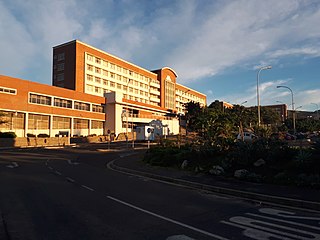
Karl Bremer Hospital is a hospital, situated in Bellville, Western Cape, South Africa. It was opened in 1956 with one ward. It was originally an academic hospital for medical students of Stellenbosch University and was utilised for this purpose until 1976, after which it changed to a hospital catering for private patients.

Bruno Reichart is a retired German cardiothoracic surgeon who performed Germany's first successful heart transplant in 1981 and its first combined heart–lung transplant in 1983.

The following outline is provided as an overview of and topical guide to Cape Town:
